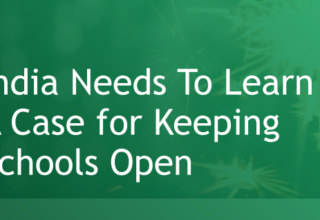

In the wake of COVID-19 lockdown, schools (over 1.5 million) in India are among the top category of closures for the 21-day period. While most primary schools have been closed from early March, the rest of the schools followed suit from March 19. Along with this, the remaining and upcoming examinations were ordered to defer and postpone till further notice.
While routinely the month of March is very less on classroom academics and more on assessments, most children are in a vacation mode and therefore closure doesn’t have much impact on learning/teaching. However, with the new academic session, which was slated to begin on April 1 in normal situation, will be delayed this year and by how much time can’t be said with any certainty amid the galloping COVID-19 pandemic. This has naturally made parents, children and other stakeholders including the government anxious.
Thanks to some previous work of digital repository creation and Internet, there seems to be a way out to tackle this schooling disruption to some degree with virtual classrooms. While several high-end private schools have already begun to start these virtual classes by making use of available softwares like Zoom and Google classes, the bulk of schools will remain dependent on government intervention, guidelines and regulations.
In this regard, the ministry of HRD has asked CBSE and agencies to prepare a package at the earliest. According to sources a team of experts and officials is working to put this plan together and by the end of first of April, CBSE will come out with a circular and model for its schools. In all probability, MHRD’s teacher resource portal diksha.gov.in will become the primary teacher resource and Google classes will be used to roll out virtual classes. This may be followed by states and other school managements. In addition to government resources, free resources like ck12.org of CK 12 Foundation and Khan Academy will be also handy to make these virtual classes roll out without any digital divide.
The virtual classes will be of about four hours and students of individual schools will be connected for classes in much the same way as actually classroom classes. The teachers will deliver lessons from their homes/schools and students can use smartphones, laptops or other devices to attend these classes.
Along with this, there is also talk of e-classes aligned with syllabus on Swayam Prabha DTH channels for school students. Time-slots of 4 hours daily has been approved on Swayam Prabha DTH channels for selected states.
So, students, teachers, parents and schools must brace themselves for the big adaptation with basic training sessions. According to experts, it is going to be as simple as using facebook. sample this










